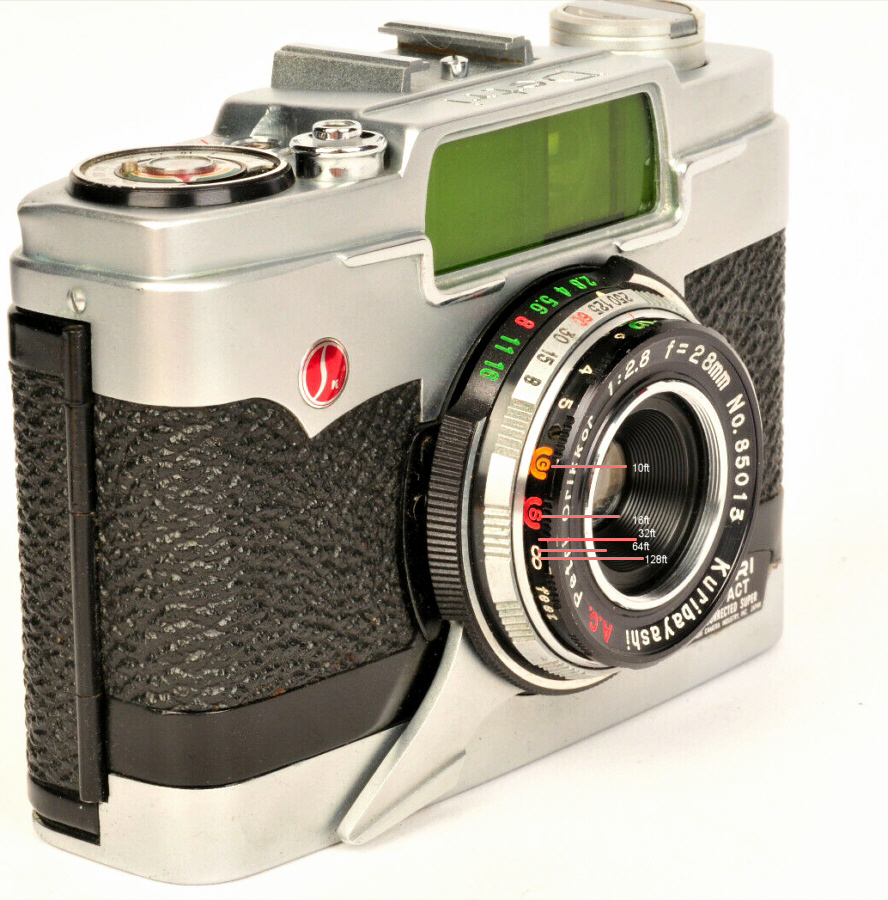Godfrey
somewhat colored
I did physics and optics a long long time ago too. 1:1 macro was always the gold standard for data acquisition of small things (... so that you could make precise measurements easily...), but there was always a macro range ... I recall my professor saying that he considered capturing anything with a magnification from 1:4 to 2:1 he considered photomacography and anything with higher magnification than that was slipping into micro-photography (yeah, he used those terms exactly).
1:10 isn't very magnified, but I think these are all just conventions adopted by various people at various times rather than formal definitions. 🙂
The discussion of what distance constitutes infinity focus for a given focal length lens is interesting. It's inspired me to do a little research on the subject. The simple statement it: Infinity for an optical system is defined as that distance from the camera whereby the light rays from the subject arrive as parallel rays, that is, that it falls within the size of the circle of confusion and thus cannot be distinguished from it. Calculating that gets a little complicated, and is dependent upon both the CoC convention using to calculate DoF, the working diameter of the lens (focal length divided by the physical size of the aperture), the focal length of the lens, and a magnification constant that seems to be typically 4000.
Example: Given a CoC of 0.05mm and a 50mm lens set to f/2, the working diameter of the lens is 25mm. Using 4000 as the magnification constant, infinity is 4000 x 25 = 100,000mm = 100m = 3,937 inches = 328 feet.
To show that this works, consider the same CoC, the same lens but set to f/8, and the same magnification constant, 4000. The working diameter is now 6.25mm, 6.25mm x 4000 = 25,000mm = 25m = 984 inches = 82 feet.
Fun stuff! 🙂
G
1:10 isn't very magnified, but I think these are all just conventions adopted by various people at various times rather than formal definitions. 🙂
The discussion of what distance constitutes infinity focus for a given focal length lens is interesting. It's inspired me to do a little research on the subject. The simple statement it: Infinity for an optical system is defined as that distance from the camera whereby the light rays from the subject arrive as parallel rays, that is, that it falls within the size of the circle of confusion and thus cannot be distinguished from it. Calculating that gets a little complicated, and is dependent upon both the CoC convention using to calculate DoF, the working diameter of the lens (focal length divided by the physical size of the aperture), the focal length of the lens, and a magnification constant that seems to be typically 4000.
Example: Given a CoC of 0.05mm and a 50mm lens set to f/2, the working diameter of the lens is 25mm. Using 4000 as the magnification constant, infinity is 4000 x 25 = 100,000mm = 100m = 3,937 inches = 328 feet.
To show that this works, consider the same CoC, the same lens but set to f/8, and the same magnification constant, 4000. The working diameter is now 6.25mm, 6.25mm x 4000 = 25,000mm = 25m = 984 inches = 82 feet.
Fun stuff! 🙂
G


